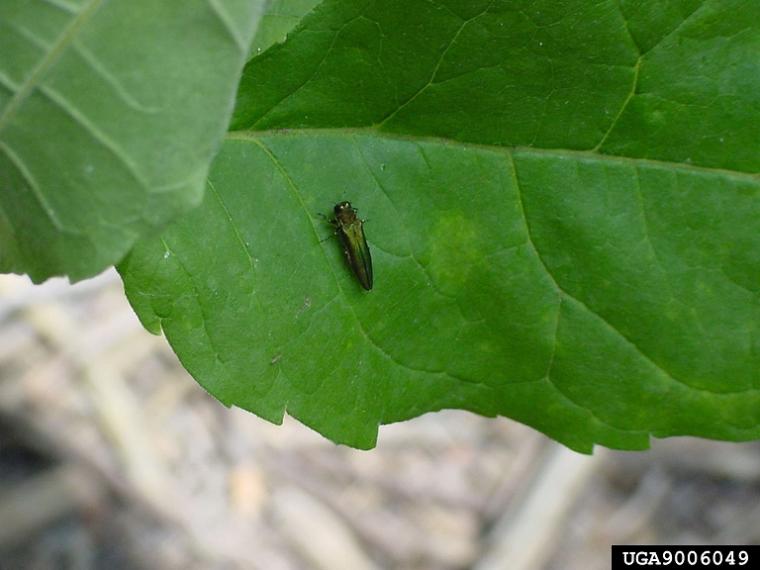
In a nutshell
Ash trees are an important part of forest ecosystems that provide food and shelter to many species of insects and wildlife. Ash trees on severely declining, and the main culprit is emerald ash borer (EAB), an invasive pest that has killed millions of ash trees in the United States. EAB has been detected in most eastern states and was found for the first time west of the Rocky Mountains in Oregon in 2022. EAB is particularly difficult to detect because its immature life stages occur out of sight underneath tree bark. Knowing where and when to expect EAB to emerge as adults gives managers an advantage in controlling this pest, helping them to know when to start surveillance, get approval for tree removal, and prepare for chemical or biological control treatments.
In this article, the authors evaluated a model that predicts activity of EAB, taking into account both phenology and locations that have suitable climate for this pest. They used observations of EAB, including those from Nature’s Notebook, to test their model and found that it correctly estimated over 99% of presence records and predicted dates of adult EAB emergence within 7 days.
What is special about this study?
As cold-blooded organisms, insects are limited by temperature; for many insects, a certain amount of accumulated heat can cue activity. There are many existing thresholds that predict how much heat needs to accumulate prior to the emergence or life cycle change in insect pests. Many of these are published in the Cooperative Extension literature, and may only be relevant for a specific region, state, or more local area. For example, the original temperature threshold for EAB was created for Midwest states. The present study led by Barker et al. takes a new approach to a national-scale model, including predictions of phenology as well as climatic suitability. This method is particularly valuable as climate change continues to shift temperatures across the globe, changing the distribution and abundance of pests.
What does this mean for YOU?
We often talk about the usefulness of your Nature’s Notebook observations to help understand how native species phenology is shifting due to climate change. This paper shows that your observations are also useful in the realm of invasive species, helping to improve management and ultimately conserve the unique ecosystems that we care about.
Citation: Barker, B.S., L. Coop, J.J. Duan, and T.R. Petrice. 2023. An integrative phenology and climate suitability model for emerald ash borer. Frontiers in Insect Science. 3:1239173 https://doi.org/10.3389/finsc.2023.1239173